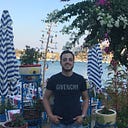An analytical report on the article “Institutionalized Organizations: Formal Structure as Myth and Ceremony” by John W. Meyer and Brian Rowan
a. What is the paper about? What are the goals of the paper? What is highlighted and which question is addressed?
The authors highlighted the strong relationship between organization structure and the myths of the institutional environment in this paper.
b. What is the main concept with which the paper concerns?
In this paper, the authors emphasized on impact of rationalized institutional rules on organizational structure. It is claimed that the form of organizations is shaped by institutional myths. Furthermore, it is argued that in postindustrial society many organizations’ formal model project the myths of their institutional environments instead of the demands of their technical production and exchange. Next, the authors pointed out that while organizations incorporate institutional items, increased legitimacy, resources, stability and survival prospects are expected.
There are three main implications:
· Environments and environmental domains which have institutionalized a greater number of rational myths generate more formal organizations.
· Organizations which incorporate institutionalized myths are more legitimate, successful, and likely to survive.
· More generally, organizations whose claims to support are based on evaluations should be less likely to survive than those which are more highly institutionalized.
c. What is the dependent and independent variables (if empirical)?
It is not empirical.
d. What is the level of analysis (macro, micro, group, individual etc.). What method was used?
The authors make macro level analysis. There is not any statistical analysis in this paper. However, there are just propositions, hypothesis and thesis without statistical data or experiments.
e. What is the gap/problem in OT that author intends to fill or answer?
The authors offer six propositions which are listed below:
· As rationalized institutional rules arise in given domains of work activity, formal organizations form and expand by incorporating these rules as structural elements.
· The more modernized the society, the more extended the rationalized institutional structure in given domains and the greater the number of domains containing rationalized institutions.
· Organizations that incorporate socially legitimated rationalized elements in their formal structures maximize their legitimacy and increase their resources and survival capabilities.
· Because attempts to control and coordinate activities in institutionalized organizations lead to conflicts and loss of legitimacy, elements of structure are decoupled from activities and from each other.
· The more an organization’s structure is derived from institutionalized myths, the more it maintains elaborate displays of confidences, satisfaction, and good faith, internally and externally.
· Institutionalized organizations seek to minimize inspection and evaluation by both internal and external constituents.
The author drew the big picture of which factors effects organization structure and behavior.
f. What insight have you developed after reading it?
After reading this paper, I understood what is actually mean of institutional organization, despite of using daily life without knowing actual main. These six propositions are simple but core of the theory like receipt.
